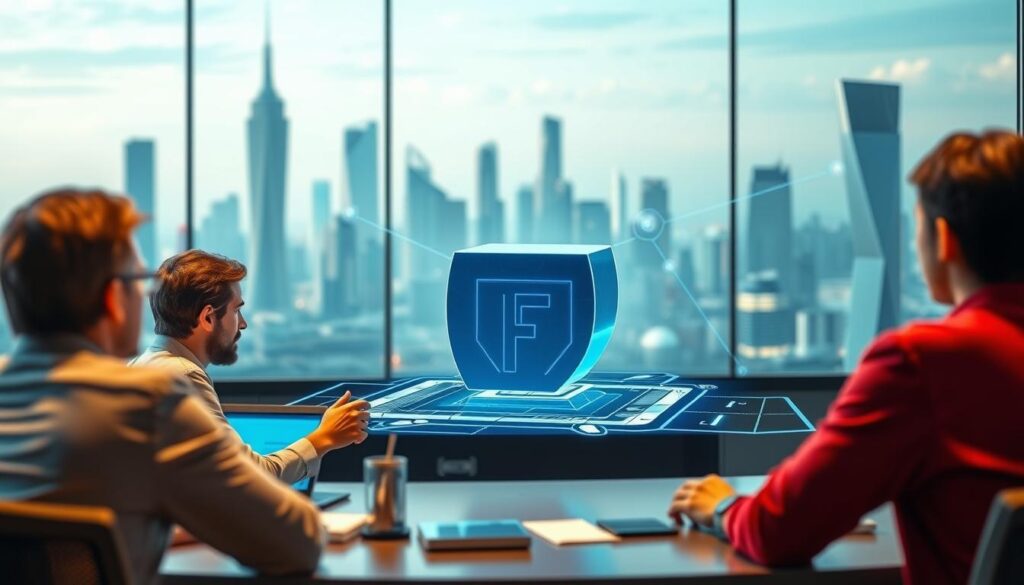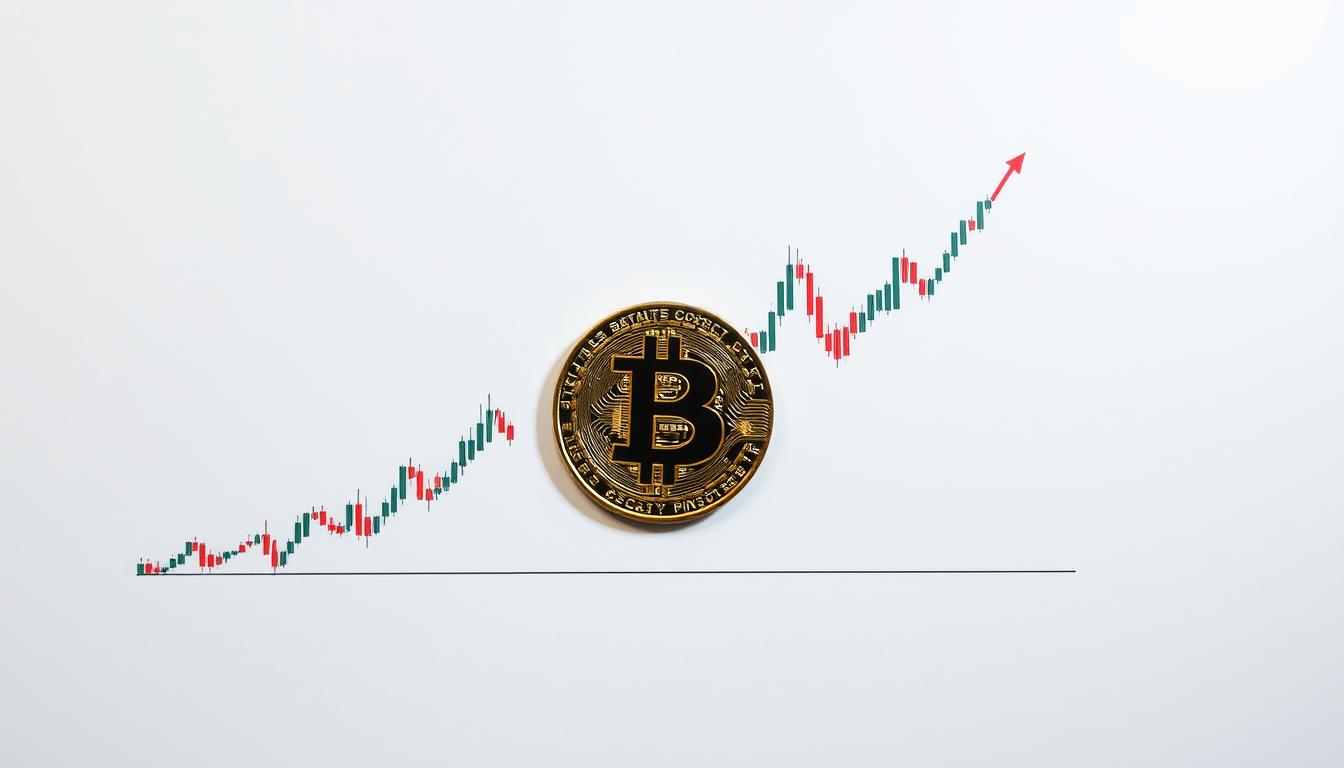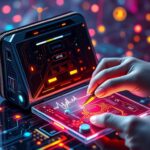Now Reading: Understanding NFT Fractionalization Shared Ownership Platform
- 01
Understanding NFT Fractionalization Shared Ownership Platform
Understanding NFT Fractionalization Shared Ownership Platform

The world of digital collectibles is undergoing a remarkable shift. High-value items, once the preserve of a select few, are becoming available to a much wider audience. This change is driven by an innovative approach to how we own valuable digital assets.
At the heart of this evolution are non-fungible tokens (NFTs). These unique digital tokens represent ownership of a specific item on a blockchain. Unlike cryptocurrencies, each one is distinct and cannot be replicated.
This new model allows multiple individuals to collectively own a portion of a single, high-value token. It breaks down financial barriers that previously made such investments impossible for many. The result is a more inclusive and dynamic market for everyone involved.
The significance of this development is profound. It transforms how we perceive value and participation in the digital economy. By enabling collective investment, it opens doors that were firmly shut just a short time ago.
Key Takeaways
- Fractionalisation makes high-value digital assets accessible to a broader range of investors.
- Non-fungible tokens are unique digital items that represent verifiable ownership on a blockchain.
- This model breaks down traditional financial barriers to entry.
- It creates new opportunities for collective investment in the digital realm.
- The approach is reshaping perceptions of value and ownership online.
- It fosters a more inclusive and participative market environment.
Introduction to the Ultimate Guide on Fractional NFTs
Collective participation in high-value digital items is becoming increasingly possible. This guide explores the innovative world of fractionalised digital property. It breaks down complex concepts into understandable insights.
The following sections provide essential foundations for understanding this emerging field. They clarify both the technical mechanics and practical implications.
Defining NFT Fractionalisation and Shared Ownership
Fractionalisation represents a groundbreaking approach to digital asset management. It involves dividing a single non-fungible token into smaller, tradeable portions. This process enables multiple investors to hold stakes in valuable digital properties.
The concept transforms exclusive digital items into accessible investment opportunities. Previously unobtainable assets become available through collective participation.
Why This Topic Matters Today
Current market dynamics highlight the growing importance of fractional nfts. They address significant barriers that limit broader market participation. High entry costs often prevent smaller investors from accessing premium digital assets.
This model creates new pathways for diverse investment portfolios. It fosters greater liquidity and community engagement within digital markets. The approach represents a fundamental shift in how we perceive and interact with valuable digital properties.
The Evolution of Digital Asset Ownership
The journey of digital asset management reveals a clear progression toward greater accessibility and participation. This evolution reflects changing attitudes about value and investment in the digital space.
From Whole NFTs to Fractional NFTs
Initially, non-fungible tokens represented complete, indivisible ownership of digital items. These whole tokens created exclusive opportunities for wealthy collectors and institutions.
The market faced significant accessibility challenges. High prices prevented broader participation, prompting innovative solutions.
Technological Advancements and Market Demand
Improved smart contract functionality enabled the division of digital assets. Blockchain infrastructure developments supported more complex ownership structures.
Investor demand for diversification and lower entry points drove this transition. The need for increased liquidity further accelerated adoption.
This model expands opportunities for creators through broader buyer bases. It represents a natural response to market inefficiencies.
| Aspect | Whole Digital Assets | Fractional Digital Assets |
|---|---|---|
| Accessibility | Limited to high-net-worth investors | Open to diverse participation levels |
| Investment Size | Substantial capital required | Lower entry points available |
| Liquidity | Often limited by high value | Enhanced through divisible ownership |
| Market Impact | Exclusive collector focus | Broader community engagement |
How NFT Fractionalisation Works
The mechanics behind collective digital asset investment centre on advanced cryptographic protocols. This approach transforms exclusive digital properties into divisible investment opportunities through a systematic technical framework.
The entire fractionalisation process relies on sophisticated technological infrastructure. This ensures security, transparency, and efficient management of divided ownership.
The Role of Smart Contracts and Blockchain
Smart contracts serve as the backbone of this investment model. These self-executing agreements automate the division and distribution of digital asset ownership.
Blockchain technology provides the immutable foundation for recording all transactions. Each smart contract defines the terms for creating and managing fractional tokens.
The blockchain ensures transparent tracking of every ownership unit. This creates trust among participants in the collective investment structure.
Step-by-Step Fractionalisation Process
The process begins with selecting a valuable digital asset for division. The owner then chooses a suitable platform to facilitate the technical implementation.
A smart contract is created to define ownership terms and mint fractional tokens. The original asset is securely locked while corresponding ownership units are generated.
Investors acquire these tokens through various distribution methods. The smart contract automatically manages all subsequent transactions and ownership records.
This systematic approach enables multiple participants to collectively own high-value digital properties. The process maintains security while expanding investment accessibility.
Benefits of Shared Ownership in Digital Assets
The democratisation of digital asset investment marks a significant departure from traditional models. This approach delivers substantial advantages for participants across the entire ecosystem.
It transforms how people interact with high-value digital items. The core benefits extend from individual collectors to the artists themselves.

Accessibility for a Wider Audience
This model dramatically lowers the financial barriers to entry. Previously exclusive digital items become available to a much broader audience.
Collectors with modest budgets can now acquire stakes in renowned artworks and rare collectibles. This inclusivity fosters a more vibrant and diverse market for these unique assets.
Increased Liquidity and Investment Flexibility
A key advantage is the enhancement of market liquidity. Dividing an asset into smaller, tradeable units makes buying and selling far easier.
This creates a more dynamic trading environment with higher transaction volumes. Investors gain unparalleled flexibility, allowing them to diversify their investment portfolios across multiple high-value items.
The ability to trade smaller shares facilitates more efficient price discovery. This benefits all participants in the ecosystem.
- Greater Market Participation: Opens doors for a wider range of investors.
- Enhanced Portfolio Diversification: Allows for spreading capital across various assets.
- Support for Creators: Artists reach new audiences and unlock additional revenue streams.
- Community Collaboration: Fosters a sense of shared interest among owners.
The Role of Smart Contracts and ERC-20 Tokens in Fractionalisation
At the core of divisible digital asset ownership lies a sophisticated combination of automated agreements and interchangeable tokens. These technologies work together to create secure, transparent systems for collective investment.
The entire process depends on advanced blockchain protocols that ensure trust and efficiency. This technical foundation makes collective participation in high-value items possible.
Automating the Process with Smart Contracts
Smart contracts serve as the backbone of this investment model. These self-executing agreements automatically manage the division and distribution process.
Each smart contract defines specific rules for ownership terms and token distribution. They eliminate the need for intermediaries by automating compliance and transactions.
The blockchain records every action transparently and immutably. This creates a trustworthy environment where predefined conditions trigger automatic execution.
ERC-20 Tokens and Enhanced Liquidity
ERC-20 tokens represent the standard for creating interchangeable ownership units. These fungible tokens enable seamless trading across various platforms.
This standardisation significantly enhances market liquidity. Investors can easily buy, sell, or trade their portions on decentralised exchanges.
The tokens integrate with existing wallet infrastructure and trading tools. This interoperability creates a more efficient and accessible investment ecosystem.
Marketplaces and Trading Platforms for Fractional NFTs
A vibrant ecosystem of digital marketplaces has emerged to support the trading of fractionalised digital assets. These specialised exchanges provide the infrastructure needed for creating, managing, and exchanging portions of valuable digital items.
Several key platforms dominate this space with distinct approaches. Fractional.art offers a user-friendly interface for creating and managing fractionalised tokens. It simplifies the process of minting ERC-20 tokens representing ownership shares.
Exploring Key Platforms and Tools
NIFTEX specialises in creating liquidity pools for fractionalised assets. This platform enables efficient trading through unique pool mechanisms. Governance features empower token holders in decision-making processes.
Unicly introduces innovative bundling capabilities for multiple digital collectibles. Creators can combine various assets into single collections before fractionalisation. The platform integrates DeFi elements for enhanced functionality.
NFTX focuses on creating liquid markets through pool-based systems. Users deposit suitable digital items and receive proportional tokens. This approach enhances market efficiency and trading volume.
These marketplaces provide essential tools for investors and creators alike. They offer auction mechanisms, fixed-price sales, and analytics dashboards. The platforms connect buyers and sellers in centralised trading venues.
Each exchange contributes to improved liquidity and price discovery. They support diverse blockchain networks and popular wallet integrations. This creates accessible environments for fractional asset participation.
NFT Fractionalisation Shared Ownership Platform
The gaming industry stands at the forefront of adopting collective digital asset models. These systems create new economic opportunities for developers and players alike.
Features and Value Propositions for Investors
Game developers gain significant benefits from this approach. They establish recurring revenue streams through secondary market royalties.
Whenever portions of digital items trade, creators earn ongoing compensation. This creates sustainable monetisation paths beyond initial sales.
Player engagement receives a substantial boost. More accessible assets foster participatory economies within games.
Communities become more invested when they hold stakes in valuable game items. This model broadens the reach of interactive entertainment projects.
Implementing the Platform for Digital Asset Investment
Successful implementation requires careful planning around technical and community aspects. Developers must choose appropriate blockchain infrastructure.
The system should support seamless trading of divisible tokens. This ensures liquidity for all participants in the ecosystem.
Design innovation flourishes under shared models. Developers can experiment with gameplay mechanics tied to collective decision-making.
Governance features linked to asset portions create deeper player involvement. This transforms how communities interact with digital properties.
These platforms deliver value through enhanced accessibility and engagement. They represent the next evolution in digital investment opportunities.
Use Cases: Art, Collectibles and Real Estate
From cultural treasures to property investments, divisible digital certificates are creating new pathways for participation. This approach opens doors to assets that were previously out of reach for most investors.

Accessing High-Value Art and Collectibles
Historically, renowned artwork remained exclusive to wealthy collectors. Now, enthusiasts can acquire a fraction of valuable cultural items. This democratisation allows broader appreciation of artistic value.
Fractional Real Estate and Alternative Investments
The real estate market benefits significantly from this model. Investors can purchase shares in properties without massive capital outlays. This approach to fractionalised nfts provides portfolio diversification across multiple property types.
| Investment Type | Traditional Approach | Tokenised Model |
|---|---|---|
| Art Acquisition | Full purchase required | Partial ownership available |
| Real Estate Entry | Substantial capital needed | Lower investment thresholds |
| Market Accessibility | Limited to affluent investors | Open to diverse participants |
| Liquidity Potential | Often illiquid assets | Enhanced trading opportunities |
Community and Collaborative Investment Opportunities
Beyond financial gains, collective investment models cultivate vibrant social ecosystems. When multiple individuals hold stakes in the same digital asset, they form unique communities bound by shared interests.
These groups of owners often develop strong connections through their common investment. The community aspect becomes as valuable as the asset itself.
Governance mechanisms empower participants in collective decision-making. Token holders can vote on matters like asset display, licensing, or potential sales.
This collaborative approach transforms passive holding into active participation. Members gain a genuine voice in how their shared digital property is managed.
The model enables resource pooling for otherwise unattainable acquisitions. Through collective effort, groups can access premium digital items that would be impossible individually.
Platforms facilitate interaction through integrated communication tools and voting systems. This infrastructure supports the social dimension of collective ownership.
For deeper insights into these collaborative models, explore our complete guide to shared ownership digital.
The psychological benefits include stronger emotional connections to assets. This often leads to longer holding periods and more engaged community participation.
Innovations and Future Trends in the Fractional NFT Ecosystem
Next-generation technologies are paving the way for a new chapter in how we interact with digital value. The ecosystem for divisible digital assets is rapidly advancing beyond its initial stages.
This progress promises to make participation smoother and open up entirely new applications. We are moving towards a more integrated and accessible digital economy.

Emerging Technologies and Market Predictions
Improvements in blockchain scalability and interoperability are crucial for the future. They will reduce transaction costs and make these assets easier to trade across different networks.
This technological evolution supports the growth of the entire market. Experts predict that the concept of divisibility will become standard for high-value digital items.
We will see deeper integration with decentralised finance protocols. This will create more sophisticated financial products around these assets.
The space is also expanding into virtual worlds and online games. Here, collective holding of digital items can enhance community engagement and create new economic models.
As technical barriers lessen, mainstream adoption is expected to accelerate. This will bring more liquidity and stability to the market.
The future points towards collaborative governance, where groups of owners make decisions together. This transforms a simple investment into a participatory project.
Legal and Regulatory Considerations for Fractional NFTs
The intersection of blockchain technology and traditional legal systems presents unique challenges for tokenised investments. Navigating this complex landscape requires understanding how existing regulations apply to innovative digital asset structures.
Compliance and Intellectual Property Rights
One critical area involves securities law implications. Regulators may view fractional tokens as investment contracts, triggering registration requirements. This classification varies significantly across jurisdictions.
Intellectual property rights require careful definition in tokenised arrangements. Creators must clarify what ownership of a fraction actually entails. Usage restrictions and licensing terms need explicit documentation.
Compliance obligations extend to anti-money laundering protocols and know-your-customer requirements. Platforms must implement robust verification systems. These measures protect all participants in the ecosystem.
Smart contract technology can embed compliance mechanisms directly into the code. Automated enforcement of regulatory requirements provides additional security. This technical approach complements traditional legal frameworks.
The regulatory environment continues to evolve as authorities develop specific frameworks. Staying informed about these changes is essential for sustainable participation. Legal counsel should review all tokenised offerings.
Implementing a Fractional NFT Project: A Practical Guide
Successfully launching a divisible digital asset initiative requires careful planning and a structured approach. This guide outlines the key steps to bring your concept to life.

The initial phase involves selecting the right digital item. Ideal candidates have high desirability and clear utility. This ensures there is genuine demand for partial stakes.
Choosing the Right Platform and Tools
Selecting a technical foundation is a critical decision. Different services offer varied features and blockchain compatibility. Your choice should align with your project’s specific needs.
Popular options include Fractional.art, Unicly, and NFTX. Each has distinct strengths in user experience and functionality. Research is essential to find the best fit.
| Platform | Primary Strength | Ideal For |
|---|---|---|
| Fractional.art | User-friendly interface | Projects prioritising ease of use |
| Unicly | Asset bundling capabilities | Collections of multiple items |
| NFTX | Liquidity pool mechanisms | Enhancing market liquidity |
Managing Governance and Ownership Rights
The core of the entire operation is the smart contract. This code governs how the original asset is locked and how tokens are minted. It must be secure and transparent.
Defining ownership rights clearly is paramount. Token holders need to understand what their stake entitles them to. This includes potential voting rights on future decisions.
User education is crucial for adoption. Provide clear guides on purchasing fractions and the benefits involved. A well-informed community is a successful one.
Challenges and Risks in Fractional NFT Investments
Investing in divisible digital assets presents unique hurdles that require careful consideration. While the model offers accessibility, it also introduces complexities not found in traditional whole-asset holding.
A primary concern is liquidity. If the secondary market for these tokens is thin, selling your shares can be difficult. This lack of active trading can trap capital.
Addressing Liquidity and Reconstitution Hurdles
The most significant challenge is reconstitution—reuniting all the fractions to make the asset whole again. This process is logistically complex when many owners are involved.
Coordinating agreement among a large number of fractional owners, who may have different goals, is a major hurdle. Legal definitions of rights must be crystal clear to avoid disputes.
Solutions are emerging to manage these issues. Governance frameworks or decentralised autonomous organisations can facilitate collective decision-making for fractional owners.
Automated buyout mechanisms, like a Dutch auction, offer a path for reconstitution. In this type of sale, the price starts high and decreases until a bidder acts, creating urgency.
Other risks include market volatility and regulatory uncertainty. Smart contract vulnerabilities are also a concern for this type of investment.
To mitigate these risks, investors should conduct thorough due diligence. Understanding the governance rules before buying a fraction is essential for managing expectations.
Conclusion
A fundamental shift is underway in how we approach valuable digital property, moving from exclusivity to inclusivity. This model opens doors for a wider audience, allowing collective investment in prized assets.
The benefits are significant. It enhances market liquidity and provides new avenues for portfolio diversification. This empowers a broader group of participants to engage with the digital space.
For creators, this presents exciting opportunities to reach larger audiences and build communities. As the ecosystem matures, this concept is set to play an increasingly vital role.
Exploring these opportunities requires careful research and an understanding of the associated dynamics. The future points towards more innovation and collaborative models, transforming how we perceive value and participation online.
FAQ
What is a fractionalised NFT?
A fractionalised NFT is a high-value digital asset, such as a piece of art or a collectible, that has been divided into smaller units or shares. These fractions are represented by tokens, often using the ERC-20 standard, which allows multiple individuals to own a portion of the underlying asset. This concept makes expensive items accessible to a broader range of investors.
How does the process of creating fractional shares work?
The process typically involves using a smart contract on a blockchain. The original asset is locked into a secure digital vault. The smart contract then mints a predetermined number of tokens, each representing a fraction of the item’s total value. These tokens can then be distributed or sold on various trading platforms, enabling shared ownership.
What are the primary benefits of this form of investment?
The main advantages include enhanced accessibility, as it lowers the financial barrier to entry for high-value items. It also increases liquidity in markets that are traditionally illiquid, allowing owners to trade their shares more easily. Furthermore, it opens up collaborative investment opportunities within a community.
Are there any legal considerations for fractional owners?
Yes, legal and regulatory considerations are crucial. These can involve compliance with securities laws, depending on the jurisdiction, and clearly defining the intellectual property rights associated with the artwork or asset. It is essential to understand the governance rules outlined in the smart contract regarding ownership rights and potential future sale.
Which types of assets can be fractionalised?
While digital art and collectibles are common, the concept is expanding. Use cases now include real estate, where property value is tokenised, and other alternative investments like rare physical items. The market for these digital assets is continually evolving, embracing new types of valuables.
What role do marketplaces play in trading these tokens?
Specialised trading platforms and marketplaces provide the essential infrastructure for buying, selling, and exchanging fractional tokens. They create a space for price discovery and facilitate transactions, connecting creators with a global community of investors and enhancing the overall liquidity of the asset.













